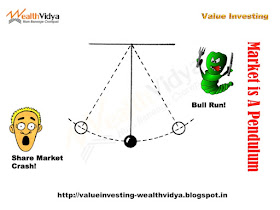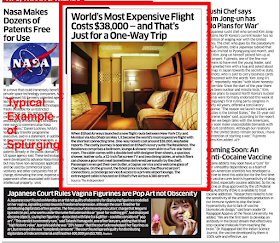Meaning and Definition:
Balance Sheet, also known as the ‘Statement of Affairs’, is
the first and the most important of the three financial statements, the other
two being the ‘Profit and Loss Account’ and ‘Cash Flow Statement’. It lists the
assets and liabilities of a business as on a particular date.
The assets and liabilities in the statement of affairs
balance-out each other and hence the name ‘Balance Sheet’.
 |
| Picture shows a weighing scale where assets and liabilities balance-out each other |
Example:
|
The Great Eastern
Shipping Company Ltd.
Balance Sheet as on 31st
March 29016
|
|
Liabilities
|
Rs. in Crores (Rs. 10 million)
|
Assets
|
Rs. in Crores (Rs. 10 million)
|
|
Current Liabilities:
|
|
Current
Assets:
|
|
|
Short-Term
Borrowings
|
0.00
|
Cash
And Bank Balances
|
2,624.98
|
|
Sundry
Creditor (Trade)
|
1,223.62
|
Current
Investments
|
877.97
|
|
Other
Current Liabilities
|
1,057.59
|
Sundry
Debtors (Trade Receivables)
|
320.56
|
|
Short Term Provisions
|
1,098.62
|
Inventory
|
113.23
|
|
|
|
Short
Term Loans and Advances
|
90.15
|
|
|
|
Other
Current Assets
|
114.96
|
|
Total
Current Liabilities
|
2,379.83
|
Total Current
Assets
|
4,141.85
|
|
|
|
|
|
|
Term
Liabilities:
|
|
Non-Current Assets:
|
|
|
Debentures
|
0.00
|
Fixed
Assets:
|
|
|
Term
Loans
|
4,930.21
|
Tangible
Assets
|
10,652.35
|
|
Long
Term Provisions
|
37.61
|
Intangible
Assets
|
0.63
|
|
Other
Term Liabilities
|
0.00
|
Capital
Work-in-progress
|
365.34
|
|
Total
Term Liabilities
|
4,967.82
|
Total Fixed Assets
|
11,018.32
|
|
Total
Outside Liabilities
|
7,347.65
|
Non-Current
Investments
|
0.00
|
|
|
|
Deferred
Tax Assets (Net)
|
0.57
|
|
Net
Worth (Shareholders’ Funds):
|
|
Long
Term Loans and Advances
|
44.51
|
|
Ordinary
Share Capital
|
150.78
|
Other
Non Current Assets
|
426.30
|
|
Reserves
& Surplus
|
8,133.12
|
|
|
|
Net
Worth or Net Assets
|
8,283.90
|
Total Other
Non-Current Assets
|
471.38
|
|
Total Liabilities
|
15,631.55
|
Total Assets
|
15,631.55
|
Major Break-up of Assets and Liabilities:
 |
| Pie0chart depicting major break-up of assets and liabilities |
When
total outside liability, that is money owed to outsider or people other than
shareholders, is deducted from total assets, we get the net assets or shareholders’ funds. It is also called net worth and belongs to the
shareholders who have invested their money in the business.
In
the balance sheet of the company or business it is shown as a liability because
the shareholders and the business are technically different and separate and
the business owes the net worth to the shareholders.
The
net assets or the net worth primarily grows out of profits generated by the
company.
More
the assets and lesser the outside liabilities better it is for the
shareholders, as the net assets or the net worth belongs to them.
Conclusion:
Balance Sheet is the most important financial statement. All others support the balance sheet. It lists the assets owned by liabilities owed by a business.
Further Related Reading:





